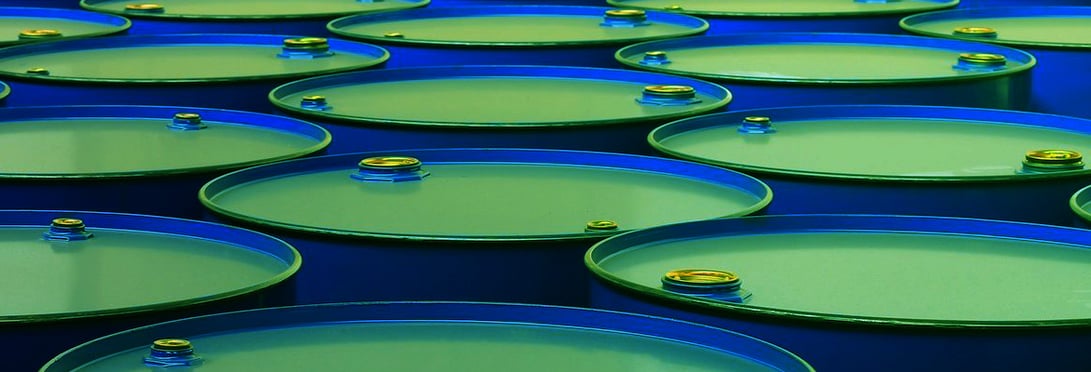
When it comes to transferring or pumping dangerous liquids, it's crucial that you are aware of the hazards associated with them, including limitations of the equipment and smart and safe methods commonly used in the industry.
Chemicals can be dangerous for several reasons, including their effects on a person's health, causing serious harm to staff, equipment or other machinery, and polluting the environment or food chain. Chemicals and solvents are used in a wide range of production facilities, from consumer goods and industrial processes to pharmaceuticals and treatment of effluent. If they aren't used to produce, they are most often used to clean, treat or finish products, particularly during hygienic food processes before or after production.
Common acids used in the industry are sulphuric acid, which is used in fertilizer and as an electrolyte in car batteries, hydrofluoric acid, and acetone. Most chemicals arrive on site in drums or containers, from which they are transferred into production areas where they are required. From the moment they arrive on site, it is crucial that the appropriate plant equipment is utilised to avoid any possible leakage or danger to the environment.
As chemicals can cause serious damage to staff, procedures, and plant equipment, it's crucial that methods of transferring chemicals are safe and reliable. Global Pumps highlights the key considerations that should be made when considering chemical pumping or transferring.
As chemicals are commonly found in drums or containers when they arrive on site, drum pumps are frequently used for transferring. A drum pump works by fitting the narrow tube, which houses the vertical shaft, into the top of the drum. The motor (or in other cases, the hand crank) works to suck out the contents of the drum. For small applications or where infrequent use is required, a hand pump is suitable. However, for frequent chemical transfer, an electric-operated drum pump is suggested. They can transfer a variety of hazardous liquids, particularly those that are harsh and corrosive. Available in electric, pneumatic, or hand-held options, there are a variety of accessories suitable for chemical control, including dispensing nozzles.
When it comes to pumping chemicals continuously, or more frequently than to and from barrels, a magnetic drive pump is suggested. Magnetic drive pumps work through the attraction of a drive magnet and inner magnet, which allows the full torque of the motor to be passed to the impeller. The combination of non-metallic, seal-less magnetic drive pumps offer corrosion resistance and zero leakage, making them a top recommendation for pumping highly corrosive chemicals. The robustness of the working principle of magnetic drive pumps assures producers that they will continue running through difficult and challenging scenarios. The only wearing part is the bearing assembly, which will require maintenance every couple of years.
Depending on the corrosive nature of the chemicals, peristaltic hose pumps are also a viable, consistent pumping option. As the hose is the only component that meets the fluid, there are a variety of rubber compounds that can be used to withstand the corrosive nature. As a safety precaution, the process fluid is completely contained within the pump in the event of a burst hose. To avoid the risk of a rupture of the hose, peristaltic pumps can be fitted with burst hose protection. This detects a build-up in pressure and can avoid any damage to the pump or leakage of the chemical in worse case scenarios.
Air operated diaphragm pumps (AOD) are another suitable pump for pumping corrosive chemicals. The working elements in an AOD pump are flexible diaphragms, which means compressed air is being applied to air valves incorporated within the pump. They are leak-free, as they do not have plungers or piston nods, which commonly pass through the pressure boundary. Leakage can only occur if the diaphragm breaks, however this is generally monitored during servicing and should be part of a preventative maintenance schedule on high risk sites.
It is important when purchasing your pump that the pump is chemically compatible and will not corrode due to the corrosive nature of the chemical. Global Pumps works with multiple industries and can advise on best practices for chemical transferring and pumping. Our top tips for selecting a chemical transfer or chemical pump include:
Prior to purchasing a chemical pump, ensure that a risk analysis has been done on the environment in which the pump is entering, and staff are aware of risks associated with transferring and pumping corrosive fluids.
For more information on chemical pumps or to speak to an expert about your high-risk application, contact Global Pumps. With over 40 years' experience working in multiple industries across a wide range of applications, our team can assist you with concerns or questions. Contact us at 1300 1 GLOBAL (145 622) or at sales@globalpumps.com.au.
If you need some guidance on how to select the right pump then you’re not alone! There’s such a wide range of pumps in Australia, from centrifugal pumps to hose pumps to diaphragm pumps. The options available to you can make it a difficult choice, so we’ve created this special guide to help step you through the process of selecting the ideal pump for your requirements.
Looking for pump stations?
Visit Global Water
Head Office
12 Selgar Avenue Tonsley
South Australia 5042